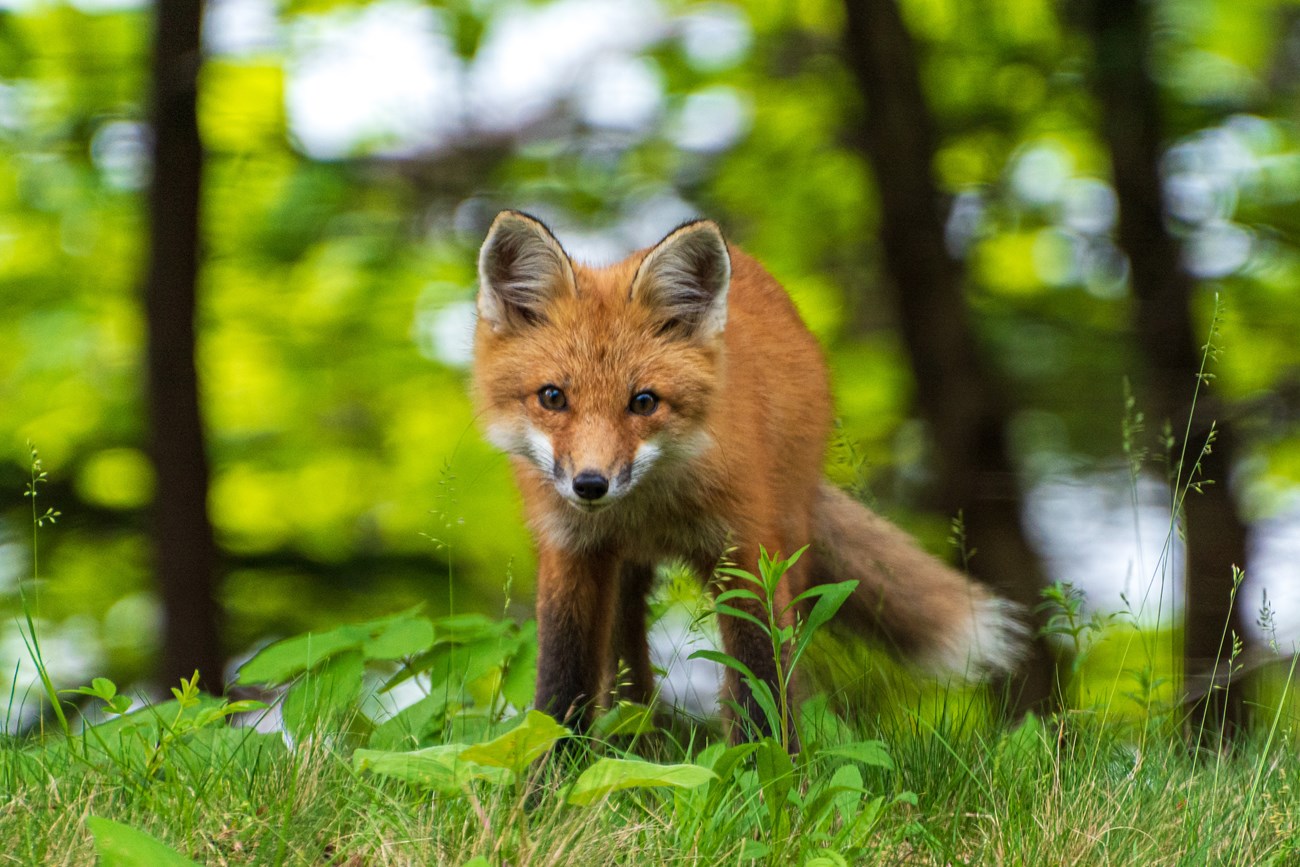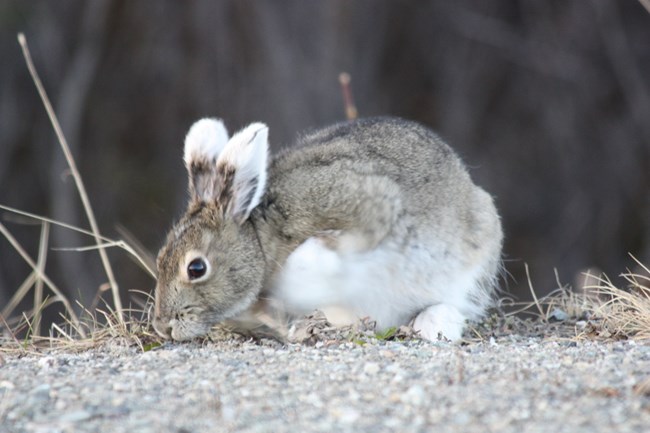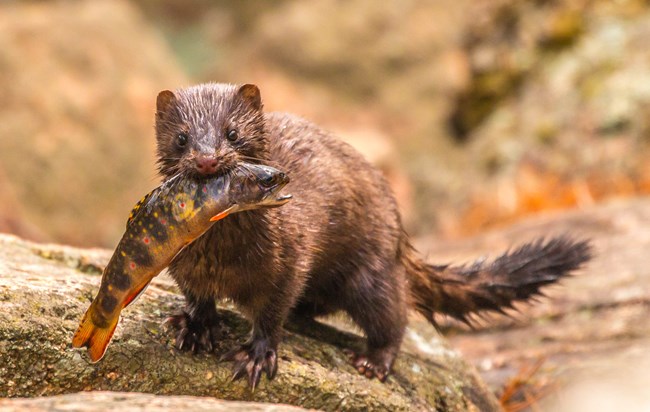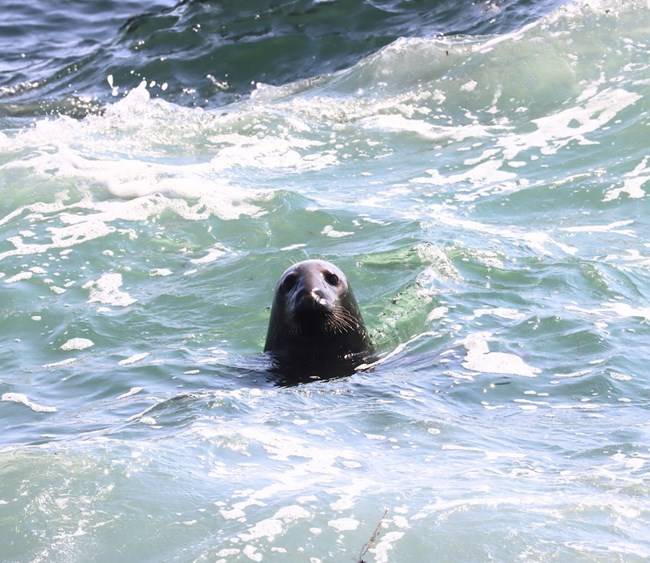
Matthew Lambert / Friends of Acadia 
NPS Photo HerbivoresAcadia's largest wildlife inhabitants are in the ungulate family. This includes white-tailed deer and very rarely moose. As very large mammals that need a great deal of space, moose are rarely seen in Acadia. White-tailed deer, on the other hand, are plentiful. Your best bet to see them is at dawn or dusk around the Sieur de Monts area or along the carriage roads. 
Photo by William Sweet, Friends of Acadia, NPS CarnivoresThough seldom seen, carnivores play an important role in the ecosystems of Acadia. With discerning eyes, signs of red foxes and coyotes are found around the park. Raccoons also reside in the park, and provide a great reason to store your food properly at campgrounds. Striped- Skunks are a nocturnal species, and are more likely to be seen at night along the carriage roads. More secretive animals like bobcats, otters, mink, fishers and pine martens live in the park as well. When hiking more remote trails in the park, keep a sharp eye out for movement to spot these park residents. Black bears are rarely seen in the park but there is a permanent year round population on Mount Desert Island. Being connected to the mainland, the Schoodic Peninsula area of the park has more frequent sightings of these secretive creatures. 
Photo by Will Greene, Friends of Acadia, NPS RodentsMost people think of rats and mice when they think of rodents, but Acadia is home to more than just that! We have several species of mice as well as beaver, woodchuck, porcupine, muskrat, voles, chipmunks, squirrels, and even flying squirrels. North American Beaver are the most noticeable species in the rodent family here. Like humans, they drastically modify their home environment by building dams and cutting down trees, creating wetlands and other habitats that are used by many other species. Walk around Jordan Pond, the Tarn or Witch Hole Pond to see chewed stumps and other signs of beaver activity. While beavers were almost trapped to extinction by the beginning of the 20th century, they've come back in force and can be found throughout the park. BatsBats are an often overlooked wildlife species because they are most active when we are the least active. All night long bats in Acadia National Park are busy feeding on thousands of insects. Many of these insects are considered nuisances and bats do an excellent job in keeping their numbers down. Little brown bats and eastern small-footed bats are two of the eight species of bats that have been found in Acadia. Today, bats are an important research species in the park because of their dramatic population decline as a result of white-nose syndrome. Bat species in Acadia National Park have decline over 80%. The park and their partners are working to understand their role in the ecosystem, where their most important habitat is, and how we can help them recover including the federally threatened Northern Long-eared Bat. 
NPS Photo by Nicole Ball Other MammalsOther mammal species present in Acadia include marine mammals like seals, whales, and porpoises. Intertidal creatures like sea star, lobster, and sea anenomes can also be found along Acadia’s coast. The marine wildlife page is a great place to learn more about the creatures that live in the ocean around Acadia National Park. NPSpecies ListsNPSpecies is a consolidated database where you can find the latest information on any species from any National Park Service unit. This resource lets you search for species information on specific parks and allows you to create your own itemized species lists. How Does it Work?Use the dropdown menus below to select the species category that you'd like to view. You can choose to get a checklist or to get the full list, which includes more information about each species. Once you make your selections, click on the view PDF button. This will generate your customized report. From here, you can click on the large Print button at the top of the document to print the report, or save the report by clicking on the blue-and-white floppy disk symbol to save the report. Select a Park:Select a Species Category (optional):
Search results will be displayed here.
|
Last updated: August 28, 2025
